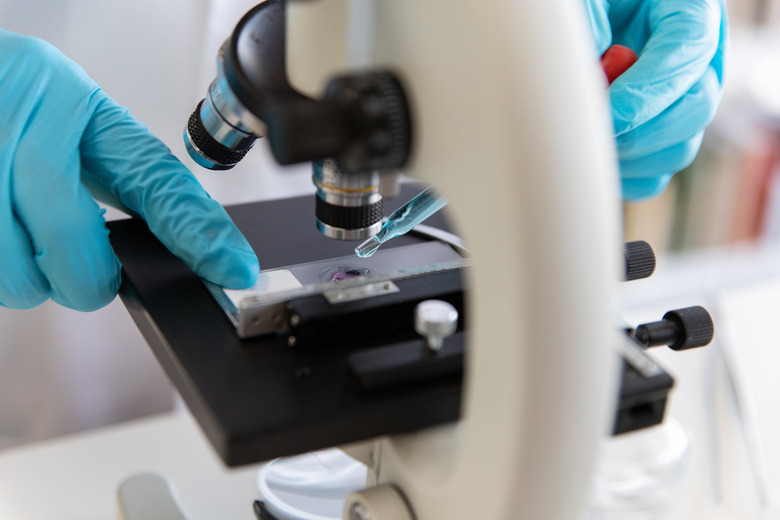What Are mRNA, rRNA & tRNA?
RNA is a critical component of every single living cell in the universe. Without it, life as we know it could not exist. There are three types of RNA, each with a unique function. mRNA is used to produce proteins from genes. rRNA, along with protein, forms the ribosome, which translates mRNA. tRNA is the link between the two other types of RNA.
RNA Features
RNA Features
RNA, or ribonucleic acid, is a linear polymer of adenine, thymine, cytosine, and uracil that is created in the cell by a process called transcription, and it differs from DNA in several ways. First, the ribose sugars on DNA nucleotides are short one hydroxyl group compared to RNA, hence the name deoxyribonucleic acid. This key modification makes RNA much more chemically reactive. Second, DNA uses thymine to base pair with cytosine, while RNA uses uracil. Third, DNA tends to form into a helix of double-stranded nucleotides, with base pairs making up the "rungs" of the helical ladder. RNA can be found in single-stranded form, but it more commonly forms complex three-dimensional structures, and this feature usually serves to confer functionality on RNA molecules.
RNA Synthesis
RNA Synthesis
RNA transcription is a process mediated by RNA polymerase, an enzyme that creates an RNA complement to template DNA with the help of a complex of proteins. Transcription is heavily regulated by promoter elements and inhibitors. All three types of RNA are synthesized in this manner.
mRNA
mRNA
mRNA, or messenger RNA, is the link between a gene and a protein. The gene is transcribed by RNA polymerase, and the resulting mRNA travels to the cytoplasm, where it is translated by ribosomes into a protein with the help of tRNA. This form of RNA is extensively altered post-transcriptionally with modifications such as methylguanosine caps and polyadenosine tails. Eukaryotic mRNA frequently includes introns which must be spliced out of the message to form the mature mRNA molecule.
rRNA
rRNA
rRNA, or ribosomal RNA, is a major component of ribosomes. After transcription, these RNA molecules travel to the cytoplasm and join with other rRNAs and many proteins to form a ribosome. rRNA is used both for structural and functional purposes. Many reactions in the translational process are catalyzed by key portions of certain rRNAs in the ribosome.
tRNA
tRNA
tRNA, or transfer RNA, is the "decoder" of the mRNA message during protein translation. After transcription, tRNA is extensively modified to include nonstandard bases such as pseudouridine, inosine, and methylguanosine. By themselves, ribosomes cannot form a protein when the mRNA makes contact. The anticodon, a string of three key bases on the tRNA, match with three bases on the mRNA message called the codon. That is only the first function of tRNA, as each molecule also carries with it an amino acid which matches the mRNA codon. The ribosome functions to polymerize the amino acids linked to the tRNA into a functional protein.
References
- Biochemistry, Third Edition; Voet and Voet; 2004
Cite This Article
MLA
Mullis, Robert. "What Are mRNA, rRNA & tRNA?" sciencing.com, https://www.sciencing.com/mrna-rrna-trna-5033460/. 17 September 2018.
APA
Mullis, Robert. (2018, September 17). What Are mRNA, rRNA & tRNA?. sciencing.com. Retrieved from https://www.sciencing.com/mrna-rrna-trna-5033460/
Chicago
Mullis, Robert. What Are mRNA, rRNA & tRNA? last modified March 24, 2022. https://www.sciencing.com/mrna-rrna-trna-5033460/
